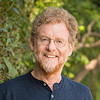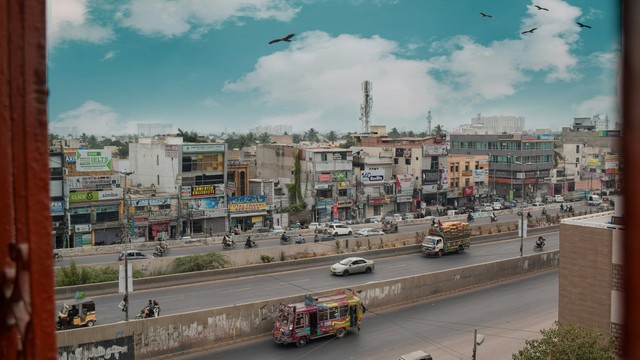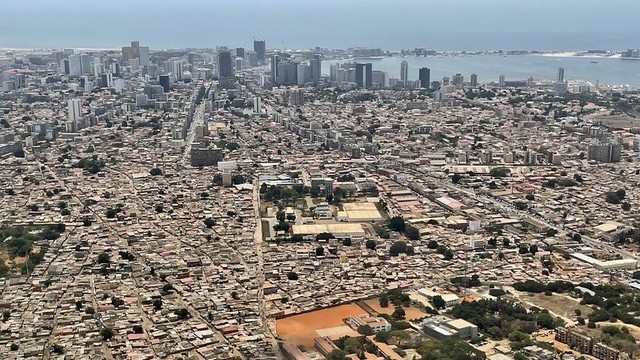Keeping urban health on the agenda in the 1980s and 90s
Part three of this blog charts a growing awareness of the powerful influence of urban contexts on health and why that matters.

The second part of my blog ended with me suffering a massive hangover after an evening toasting our leaders at a World Health Organization (WHO) meeting in St Petersburg.
This period begins with an account of how IIED-America Latina was formed and its landmark contribution. We go on to take a look at the range of measures taken to further knowledge of health issues in informal settlements, including setting up the Environment and Urbanization (E&U) journal.
Tackling the legacy of authoritarian regimes on city residents
My colleague Jorge Hardoy and his family had to leave Argentina in 1976 after receiving death threats. A military government was in power and thousands of Argentinians were murdered in the ‘dirty war’.
IIED invited Jorge to set up a Human Settlements programme in its London office in 1977. But he was able to return to Argentina two years later and continued directing the programme from there, while also setting up our sister institution, IIED-America Latina.
With many Latin American countries returning to democracy, he was faced with a continent starved of research and debate under previous governments – and universities lacking any progressive teachers. Many had been sacked, or even ‘disappeared’ (murdered).
To address this, Jorge organised dozens of seminars in different countries, in collaboration with several other institutions. Many were on urban health and health determinants issues. He also set up the journal Medio Ambiente y Urbanización (MAyU) with Hilda Herzer in 1983 to disseminate papers presented at these seminars and give participants the chance to publish.
In 1984 Jorge’s wife, Ana Hardoy, developed a programme to support residents of informal settlements in Buenos Aires to secure tenure, and upgrade their homes and neighbourhoods. It also supported local governments in engaging and working with residents.
The work was a powerful reality check as it revealed the health issues the residents faced. This was recognised by the municipal authority that donated the much-needed lands and participated in integral improvement projects for which Jorge’s support was so important. When the inhabitants of one of the informal settlements were invited to choose a name for their settlement, they named it 'Jorge E Hardoy'.
Widening influence through key publications
IIED’s Human Settlements programme also initiated studies of health issues in informal settlements in Allahabad, Khartoum and Lagos with local research centres. Their findings were published in 'The Poor Die Young' edited with Sandy Cairncross from the London School of Hygiene and Tropical Medicine (LSHTM) and containing chapters from World Health Organization (WHO) and LSHTM staff.
Two other books coming out of seminars that contributed to the growing interest in urban health in informal settlements were 'In the shadow of the city community health and the urban poor' and 'Habitat, health and development'.
In 1990, WHO convened an expert panel meeting on urban health chaired by Jorge Hardoy and Len Duhl, one of the founders of the ‘Healthy Cities’ movement. Much of its focus was on health issues in informal settlements. And the Brundtland Commission’s 1987 report, 'Our Common Future', revived global interest in sustainable development.
A World Commission on Health and Environment
To attract more attention globally to health issues, WHO set up the World Commission on Health and Environment. Chaired by Simone Veil, it had a very distinguished cast. As rapporteur and with Francesco Sella, the writer/synthesiser of material prepared by working groups, the report 'Our Planet, Our Health' was finally published in 1992. Simone Veil was a treat to work with, supporting her rapporteur by pushing for clarity and readable texts.
The eminent epidemiologist Sir Richard Doll was one of the commission members. He voiced an objection to a presentation I had made in one conference in the lead-up to the 1992 Rio Earth Summit. When asked for a short summary of what were the world’s most serious environmental problems I had replied ‘shit’. Sir Richard corrected me by saying that I should have said ‘bugs and shit’.
Our Planet, Our Health helped WHO to get key environmental health issues into Agenda 21 (the output of the Earth Summit) – where for once ‘environmental health’ was an important part of ‘environment’.
But after ten years of rewarding and interesting work by WHO, their interest waned. This was partly due to the retirement of key staff but another key factor was the huge resources now needed to tackle HIV/AIDS.
The launch of a journal
In 1989, noting the success of MAyU, Jorge Hardoy, Diana Mitlin, Julio Davila and I established the journal Environment and Urbanization. We saw it as a means to support and connect a large and varied network of researchers, grassroots organisations and staff from NGOs, local governments and international agencies interested in urban issues.
The move to Sage Publications, who had agreed to continue free access to readers in the global South, helped bring a large increase in article downloads – now typically over 500,000 per annum.
A long-overdue focus on urban health
To date over 70 papers with health in the title have been published – which would have been much higher if it had included papers on key determinants of health such as sanitation.
The definition of health is rightly broad: ‘a state of complete physical, mental and social wellbeing and not merely the absence of disease or infirmity’. But this means that almost every aspect of life in urban areas affects urban health.
The papers on urban health:
- 1990-99: 32 published. Most covering health care services (10), examples of ‘good projects' (7), health inequalities (6) and healthy cities (5). We wanted to focus more attention on health inequalities so we invited Carolyn Stephens (LSHTM) to help prepare and edit a special issue on city inequality (which included papers on London, Sao Paolo, Accra and Buenos Aires). The October 1993 issue was on health and the city. Other common topics were urban poverty, housing and sustainable cities.
- 2000-09: Only eight, representing a dramatic drop in the numbers. But most of the papers during this period were on social determinants; climate change, city governance, violence, poverty or ecological urbanisation.
But perhaps more important was the decision to focus on the work and priorities of the grassroots organisations and federations that were members of Slum/Shack Dwellers International. These would never be listed as urban health initiatives, yet the community-driven informal settlement upgrading schemes they initiated and developed transformed the quality of homes and neighbourhoods. E&U has published 78 papers on the work of the federations. The second decision was to give priority to papers on climate change – surely needing no justification. Many E&U papers are cited in Intergovernmental Panel on Climate Change (IPCC) reports.
- 2010-19: 15 papers including four on informal settlements, two on social determinants and one on climate and health in informal settlements.
- 2020-23: 18 papers in three years including eight on COVID-19 (most on community responses), five on the climate crisis, and five on health services.
Choosing a theme for each issue
An important deciding factor is a theme’s relevance to global discourses. For example: issues on sustainable development linked to Agenda 21, challenging the validity of new global/World Bank poverty measurements, housing linked to the 1996 City Summit, one on the Millennium Development Goals, and on cities for the IPCC.
This list – and the work – goes on, with climate change impacts and the work of the federations to the fore in most issues.
- Read part one: 'Getting attention to urban health issues – or not?'
- Read part two: (Mis)adventures in the former Soviet Union with the WHO
Sandy Cairncross, Carolyn Stephens and Sari Kovats (all at LSHTM) have been wonderful advisers and contributors to E&U’s work on urban health.



